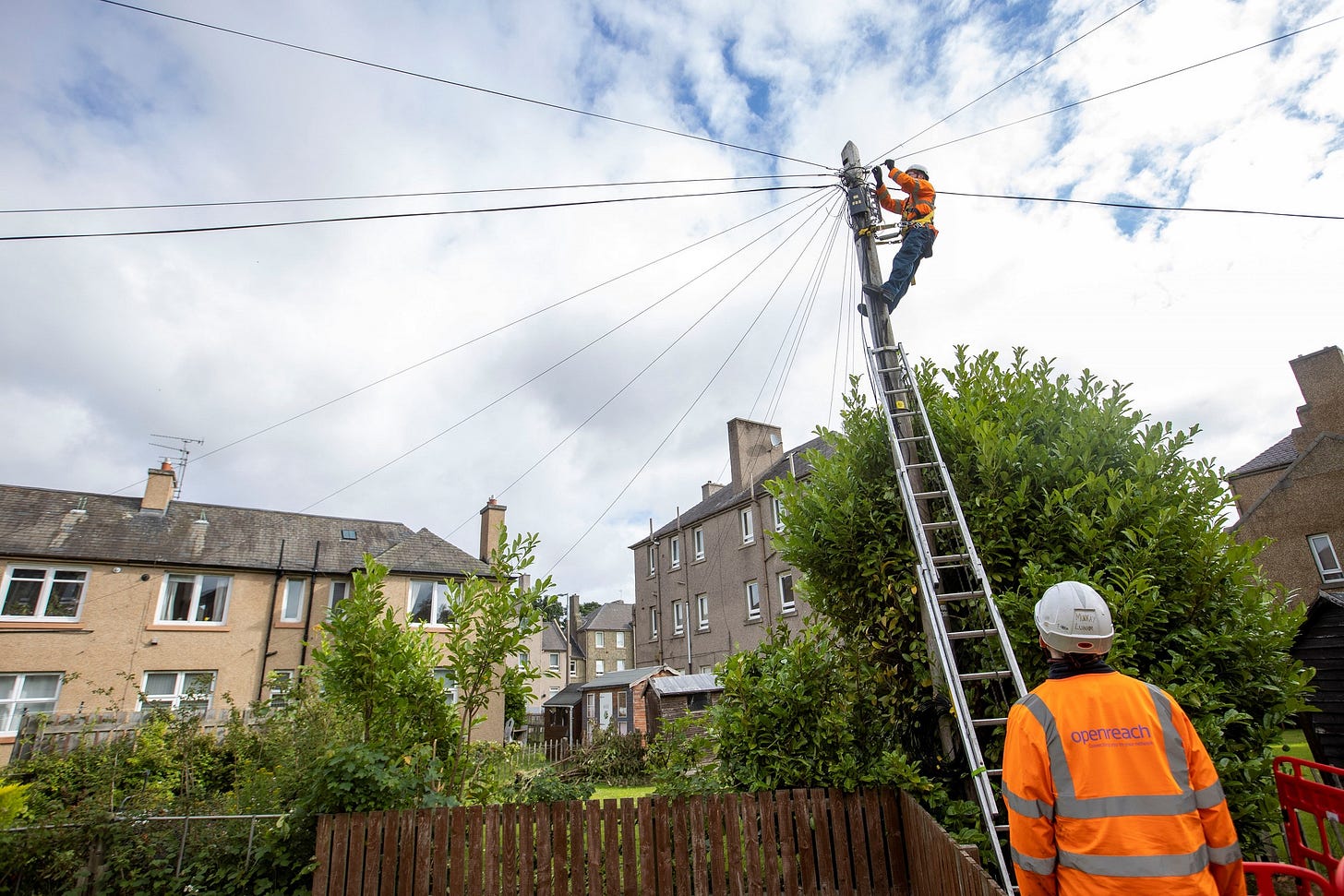Pole position: How a sturdy wooden post is helping give the Capital an ultrafast full-fibre digital future
Openreach Scotland have invested £300m in developing the nation's digital network, reaching one million homes - but there are still difficulties gaining access to Edinburgh tenements

Hidden in plain sight, it is one of those unsung life-changing pieces of apparatus: the telegraph pole. And there are several thousand still dotted around the environs of Edinburgh. But unlike chimney stacks, red telephone boxes and blue police boxes, they remain an essential part of the digital infrastructure in parts of the Capital.
There is even a fan club: the Telegraph Pole Appreciation Society, and they have a ‘Pole of the Month’ award, which has nothing to do with worthies from Warsaw or Krakow.
Our insatiable demand for digital data keeps racing on – and the Capital requires every helping hand from existing infrastructure to deliver the ultrafast full-fibre future. The trusty telegraph pole is playing its part.
Openreach is today announcing it has invested more than £300m in Scotland’s new network so far. Some of this funding has come from UK and Scottish Government support, much of it is commercial build from Openreach’s parent, BT Group. More than one million households and businesses have been upgraded for access to the faster, ultra-reliable services. There is still much more that can be done in Edinburgh – which has an aspiration to be a Smart City - but there is a catch.
While cities are often perceived as having the best coverage, small towns, such as Lundin Links, Tranent, and Kelty, dominate Openreach’s list of hotspots with the highest levels of fibre. Copper-wire telephone lines are being switched off at the end of 2025, replaced by the ultrafast full fibre phone lines.
Keep reading with a 7-day free trial
Subscribe to The Edinburgh Inquirer to keep reading this post and get 7 days of free access to the full post archives.


